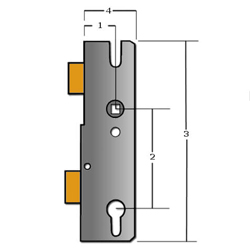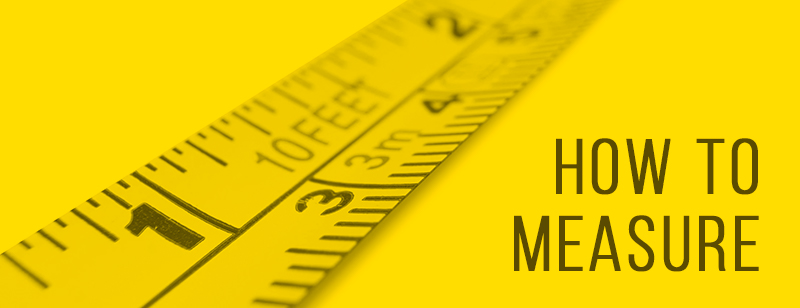How to Correctly Measure Your UPVC Multipoint Lock

These few simple measurements will help ensure you buy the right lock for your door.
No matter what lock you’re replacing, it’s important to measure your existing lock before buying a replacement. UPVC multipoint door locks are no different. This can be a daunting task for many customers as a multipoint lock involves so many components – where to start!
Today we’re going to discuss some common measurements used in the trade to describe the size and function of UPVC multipoint door locks.
Gearbox Measurements:
Correctly measuring your existing gearbox (also known as a centre case) will ensure your new gearbox fits perfectly inside your door (without having to modify the door) and functions correctly with your existing or replacement door handles.
The most common centre case measurements are:
1) Backset; this is the horizontal distance from the faceplate to the keyhole.
2) Centres; denoted by some manufacturers as the “PZ”, this measurement stretches from the centre of the cylinder hole to the centre of the follower (the square hole near the top of the gearbox that the door handle spindle fits through). If you’re purchasing replacement door handles, ensure they have the same PZ measurement as the gearbox otherwise they will not fit!
3) Case Height; this is the vertical distance from the bottom to the top of the case.
4) Case Width; this is the horizontal distance from the faceplate to the back of the case.
Don’t forget to check what type of spindle system your current gearbox uses; is it a solid single spindle, a split spindle or a twin spindle? To ensure you retain the same functionality as your existing multipoint lock, make sure you buy a gearbox that utilises the same spindle system.

Locking Point Measurements:
If you’re purchasing a full multipoint lock unit then you also need to take into consideration the location of the additional locking points. Ensuring your replacement multipoint lock has the same additional locking point distances as your original could save you the cost and hassle of buying and fitting additional replacement keeps!
Locking points are measured as the distance from the follower to the locking point. You will often see locking point distances referred to by a letter - A, B, C and D. But how do you know which one is which?
The locking points are lettered in alternating vertical distance from the follower. For example, the first locking point above the follower is called Locking Point A. The first locking point below the follower is called Locking Point B. The second locking point above the follower is called Locking Point C and so on and so forth.
Don’t forget to check what type of locking point your current multipoint lock uses before buying a replacement. Common locking points include hookbolts, deadbolts, mushrooms, rollers and pins. If you purchase the wrong style of locking point, it is likely that it will not fit the existing keep and will be unable to secure your door to the frame.
Multipoint locks may seem like a complicated product but if you keep these few measurements and considerations in mind, you’re sure to find the product you need in no time. Browse our large range of UPVC multipoint locking products and accessories including centre gearboxes, locking points and full units.
Don’t put your measuring tape away just yet! In our next blog post, we’ll discuss the common measurements used for UPVC door furniture, as well as an exciting new retrofit door handle from Chameleon.





